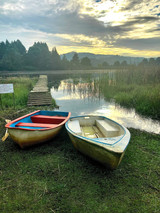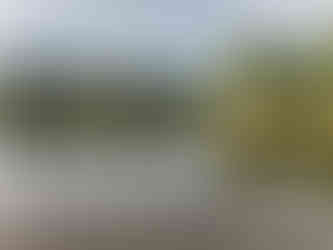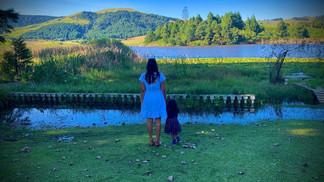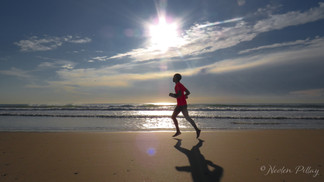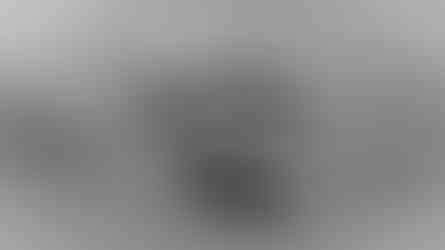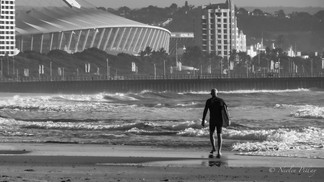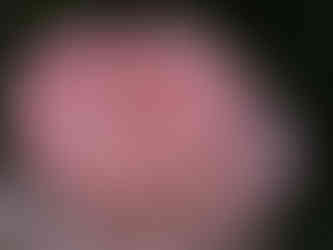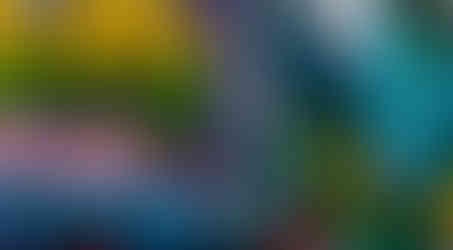In this series of articles, I document my photography journey to share what I learn with you, as I do. I am far from a professional, but believe that sometimes learning WITH someone who is at a similar stage of the journey, is as helpful as learning FROM an expert who is punching far above my level of ability. Welcome to Bipolaroid Photo!

I intentionally chose not to call myself, or you reading this, a beginner even though I am and you might be. The reasons are simple. First off, I don't like the label and the associated feeling that comes with it for some, including myself. Those of, "I am not that good," "Who would think anything of my work/art," and "Nobody is going to like or look at my photos." Secondly, I believe that we are always learning, whether having done something for 10 minutes, 10 years or all our lives. I also believe that we can learn from each other no matter what level of experience we are at. I have been an engineer for 10 years and still learn from young engineers and students every day, simply because I have done it for so long that I have forgotten the things that I needed to know, as simplistically as I needed to know it when I first began. Similarly for swimming, racing motorcycles on a racetrack, playing the guitar and producing/mixing music. I have done those since I was in my teens and many things have become second nature that when I first started out, someone needed to explain to me, slowly, or I researched heavily and I still needed to learn from doing , and failing. Those things are easily overlooked when you are a professional and typically only get to where you want it, after some trial and error.
This is not to discredit professionals in the least. We have a lot to learn from them. I mean that is how they attained that status after all.
As for the self-doubt etc...photography, like all other art, is subjective. Only I (you in your case) need to love what we have shot and the extent to which we want to edit, if at all. As people fairly new to the craft, we are easily influenced by what we see on social media and youtube. Those things that make us feel we need better equipment, better presets, and to achieve perfection in our photos. There is an aspect of photography, that is judged on technical perfection, and if that is what you enjoy then go for it, listen to those related posts and videos. The other aspect is the emotion, capturing the essence of the scene or moment and the art, as seen by you. This cannot be judged with true relevance, as good or bad, by anyone but yourself.
Let's begin at the beginning
In March of 2022, my family and I went to the Kwa-Zulu Natal Midlands for a weekend away. It was our daughter (Mir's) 3rd birthday. The place was a spectacular old farmhouse on the edge of a private bass dam. At the time I had not given much thought toward photography but found myself snapping away at the beautiful scenery with an Apple iPhone SE (2020). Not a very high-end model to say the least, but I had fun. The images below were from that trip. Editing was done in the native app on the iPhone. I did not have Lightroom or Photoshop at the time.
The next step - Point-and-Shoot
A lot had happened in the next month, was diagnosed with a bipolar mood disorder. During the early days of treatment, I found myself wanting to be alone a lot. I also found that being outside, in nature or at the beach, anywhere there was open air, helped a lot.
I was with my old man at a local mini-mall one day when I decided to walk into a used-goods store (Cash Converters) to have a look around when a camera caught my eye. Some quick googling and I decided to purchase what I thought was a decently priced second-hand camera. At this point, I had never shot on manual. I had no idea what ISO, F-Stop, Shutter Speed or Focal Length were at this point but I was determined to learn. A fair device this was, a Canon Powershot SX540 HS. Unable to change lenses but 20.3 Megapixels, 50x mechanical zoom (24mm focal length, "ultra-wide" as they quote) and relatively cheap ($175 or so); good enough to get me going.
I soon realised that I was really enjoying this new hobby, so I invested in a decent-ish tripod (no fancy name brand, but sturdy and well built at US$58), a spare battery for those long hikes (another US$58 or so) and a memory card (US$23). Luckily the camera came with a Lowerpro sling bag so a little cash was saved there. I also invested in a Lightroom and Photoshop membership on special at US$9/month at the time. I still use Lightroom mostly, barley ever photoshop except for resizing. I do need to spend some time learning PS though.
Total spend at this point = US$314 + US$9/month
I was finding my feet in operating the camera and also discovering the niches that I preferred. From the outset landscapes, black and white and flowers dominated my interest.
Here are some images that I captured as I learned to shoot on manual on the Canon PowerShot SX540 HS:
An Opportunity Presents Itself
Clearly, I was in love with my new hobby. A few months later, an opportunity presented itself in the form of a dysfunctional TV. Long story short, I was given store credit at the place I had purchased it but really wanted a TV that was on sale at another store, so I purchased a demo model Nikon D3500 Dual Lens Bundle for US$585 from the original TV seller. Not a bad deal considering that it normally went for 1.5x that price in South Africa, and I didn't really like any of the TVs that the store had at that time anyway.
By now I was comfortable shooting on manual, it was time to play with interchangeable lenses and superior settings. ISO and shutter speeds on the D3500 far outperformed the Canon, but one would expect as much for the difference in price. The important thing was that I had proven to myself, that I was going to stick to this hobby and that investing further was worth it. Do not fall into the trap of buying super expensive equipment and then giving up on the hobby. Buy cheapish first, if it takes, and you max out your equipment capabilities, then move to the next level of equipment.
NB: In the coming paragraph, there may be terms that are new to you and if they are, stay tuned, in future posts I will go into my understanding and use of them, in as layman a way as possible. Also, we will look at I learned and wasted money on so hopefully you don't have to.
I played around with the kit lenses for some time before adding more to my arsenal. With the kit lenses, I started to experiment with long exposure and realised that ND filters and a CPL would come in handy. I also felt that macro photography would be cool, with my love for flowers, but could not spring for a macro lens at the time. Some research later, I decided to purchase a cheap reverse ring and use my 18-55mm kit lens in reverse. Was not a bad experience, I learned that I also needed additional lighting for Macro! I was as yet not attuned to minimum focal distance and wondered why parts of my shots were blurry! I must have been doing something wrong, I thought.
Fast forward to today
Cost of my gear to date:
Nikon dual lens kit - US$585 (Store Display)
AF-S DX NIKKOR 35MM F/1.8G (prime lens) - US$ 175 (new)
Sigma 10-20mm f/4-5.6 EX DC HSM (Ultra-wide angle lens) - US$ 205 (used)
Sigma 28-80mm F3.5-5.6 Aspherical (Macro lens) - US$ 35 (used)
Various Filters and accessories - Approx. US $150
Total = US$ 1150
Here are some of the images I have captured with my current gear and edited to taste in Lightroom only (except the macro lens that I only received yesterday):
But please do see many more on my website at www.bipolaroidphoto.com and @bipolaroidphoto on Instagram or evolving_mentor on VERO.
I am quite proud of my progress in seven or so months and look forward to capturing new moments every day. I seldom leave home without my camera, and with every shot, learn more and more.
I have begun trying to plan shoots when I know we have an adventure coming up, like a hike, a biking roadtrip or my daughter's school play. I try to plan the specific shots I want to capture, research the settings and other advice that is out there for that scenario, and then come back and reflect on what ended up happening.
I am going to structure my future blog posts in that way, so that we can together look at what I researched, set out to capture and what ended up happening with reasons why they ended up that way.
We will also look at selected photos, and analyse why I chose that one out of the series of shots of the same scene or subject.
Yours in photography,
Neo - The Bipolaroid Mentor

I started my photographic journey in April 2022, shortly after being diagnosed with bipolar. It started out as a form of therapy but has turned into a true passion. Join me on my journey as I showcase my work and experiences in hope that you learn from them. Feel free to get in contact with me to chat further if you wish. I went from smartphone to point-and-shoot (on manual) to Nikon D3500 over six months, and hope to show how much less equipment matters, than learning how to use what you have does. Also, how much can be achieved and more importantly, enjoyed, with used and low-cost gear.
Visit www.bipolaroidphoto.com or follow me on the socials @bipolaroidphoto.
Current Equipment:
Nikon D3500
Nikon AF-P DX 18-55mm f/3.5-5.6G VR Lens (kit lens)
Nikon AF-P DX 70-300mm f/4.5-6.3G ED Lens (kit lens)
AF-S DX NIKKOR 35MM F/1.8G (prime lens)
Sigma 10-20mm f/4-5.6 EX DC HSM (Ultra-wide angle lens)
Sigma 28-80mm F3.5-5.6 Aspherical (Macro lens)
Previous equipment:
Canon Powershot SX540 point-and-shoot
Apple iPhone SE (2020)




